
views
Examples of Different Perspectives
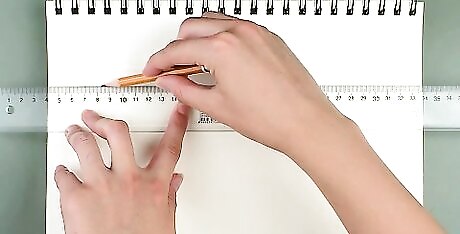
Three examples of perspectives are: one-point perspective, two-point perspective, three-point perspective.[[Image:Add a heading (1).jpg|centerIf you want a precise line, lay a ruler across the paper and run your pencil along it to get an exact horizon line. You can place the horizon anywhere you like. Draw it across the upper 1/3, center, or lower 1/3 of your paper, for instance. Positioning the horizon low will help you create a view looking up while putting the horizon near the top will direct the viewer to look down.
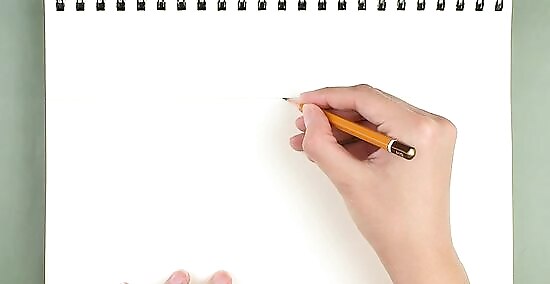
Make a pencil mark on the horizon where you want the vanishing point. One-point perspective always has a single focal point on the horizon where all the lines of interest meet. Decide where you want the viewer to focus and make a small dot or mark on the horizon to make this vanishing point.Tip: The vanishing point doesn't have to be in the center of the horizon. You can place it anywhere off to either side if you like. You've probably seen drawings of a street that have the vanishing point on the center of the horizon. This creates a very noticeable narrowing of the street, which can make it easier for beginners to draw.
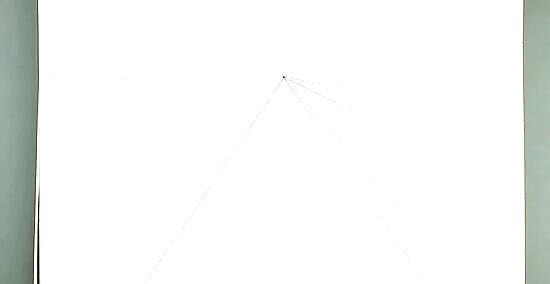
Draw lines that extend from your vanishing point. Set your ruler down so it passes through the vanishing point on the horizon. You can angle your ruler in any direction and lightly run your pencil along it to make a perspective line. Make as many perspective lines as you like. For example, if you're making a road, you'll probably want to draw 2 lines that converge at the vanishing point. Perspective lines are also called orthogonal lines. You can use them as guidelines to draw other subjects in your drawing so they're also in one-point perspective.

Sketch a geometric object or house to practice perspective. Use your ruler to create at least 3 or 4 perspective lines that extend from the vanishing point. Then, draw a square within your perspective lines so the top and bottom lines of the square are parallel to the horizon lines. Make lines that are perpendicular to the horizon line in order to connect the sides of your box. You can try this with other shapes. Draw the closest side of a shape and connect its corners to the vanishing point on your horizon.
Practice drawing landscapes or streets using one-point perspective. If you're trying to add depth to your drawings, you'll need to choose a single thing that draws the viewer in. For example, you could draw a street that narrows in the distance and sketch houses or trees alongside it. Remember that your subject should also be angled along the perspective lines. You could also make a drawing of the ocean with the sun rising or setting. The sun would be the vanishing point that makes the ocean look as though it extends far away from you. Keep in mind that the subjects closer to you should be larger than the ones that are near the horizon. EXPERT TIP Kelly Medford Kelly Medford Professional Artist Kelly Medford is an American painter based in Rome, Italy. She studied classical painting, drawing and printmaking both in the U.S. and in Italy. She works primarily en plein air on the streets of Rome, and also travels for private international collectors on commission. She founded Sketching Rome Tours in 2012 where she teaches sketchbook journaling to visitors of Rome. Kelly is a graduate of the Florence Academy of Art. Kelly Medford Kelly Medford Professional Artist Create a reference for angles and perspective out of clear plastic. Draw a horizontal line on a piece of clear plastic or plexiglass, then draw an X that meets in the middle. You can also draw grid lines if you want. Then you can hold up the plexiglass while you're drawing and use it as a reference to understand angles and perspective. Over time, you'll start to train your eyes to see the angles without the plexiglass.
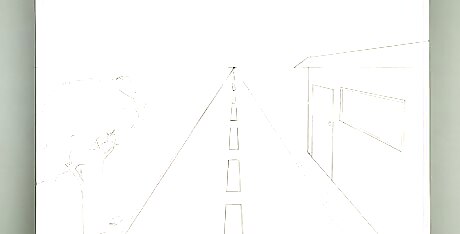
You've finished one-point perspective. Read on to learn about two-point perspective!
Drawing in Two-Point Perspective
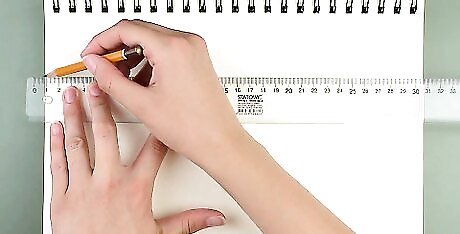
Use a ruler to draw the horizon line on your paper. Once you've decided where you want your viewer's eye level to be, lay a ruler there on your paper. Draw a light line across the ruler to create the horizon line. Place the horizon in any part of your paper, not just in the center. You could make the horizon in the upper 1/3 or lower 1/3, for instance.
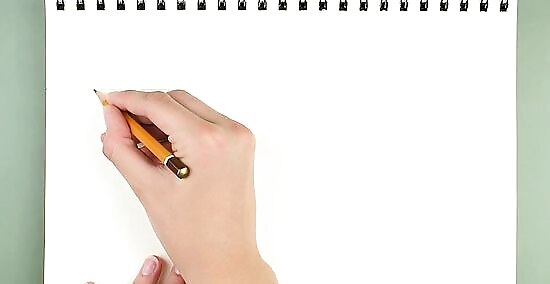
Mark 2 vanishing points on the horizon. Draw 2 small dots on the horizon as far apart as you'd like. Although there aren't rules about where to position these points, keep in mind that symmetrically placed points don't look as natural. For the most realistic-looking perspective, try to place the dots so they're off-centered. They can even be outside of the paper! Try putting 1 vanishing point near 1 edge of the paper on the horizon and make the other point off of the paper on the horizon. To do this, make a mark on your work surface or tape down a scrap piece of paper next to your drawing paper.
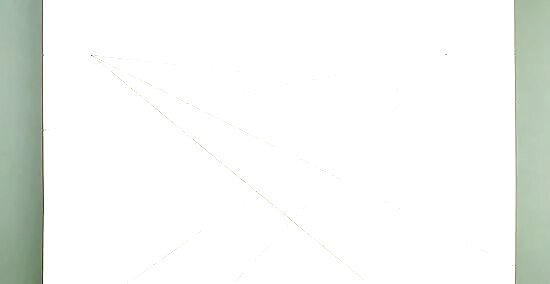
Draw 3 or 4 perspective lines that extend from each vanishing point. Place your ruler on a vanishing point and draw a light line to the area where you want to put the subject for your drawing. Then, make 2 or 3 more lines from the same vanishing point. Repeat this for the other vanishing point so all of the perspective lines from both points come together.Did You Know? Drawing several perspective lines will create a simple grid that you can use to draw your subjects. Once you're done, you can erase the lines. If you placed a vanishing point off of the paper, you can still put your ruler on it. Pull the ruler so it stretches onto your drawing paper. Then, you can make the perspective lines.
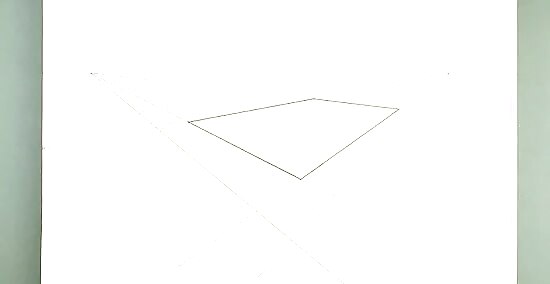
Use the perspective lines to draw the flat top of a box for a practice project. Now that you have a grid, it's much easier to draw your subject. To practice two-point perspective, draw a box or rectangle along the perspective lines. This will make the flat top of your box. Once you become comfortable with drawing simple shapes in two-point perspective, you can move on to asymmetrical objects.
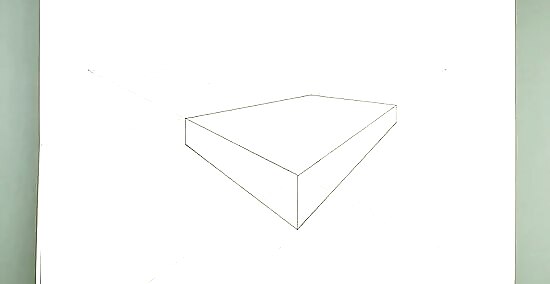
Make vertical lines to connect the box from a two-point perspective. Place your ruler vertically so it's perpendicular to your horizon line. Then, move the ruler so it's at a corner of your box and draw a straight line down. Use the ruler to make straight lines that close off the bottom of your box. Two-point perspective is great for drawing items in a still life or distant buildings.

You've finished two-point perspective. Read on to learn about adding a third vanishing point.
Adding a Third Vanishing Point
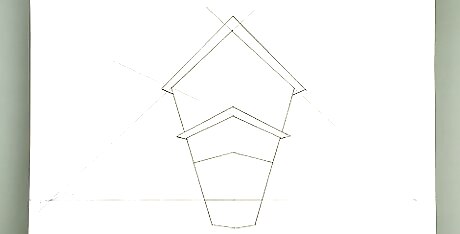
Use a three-point perspective if you want your drawing to show height. You'll probably use two-point perspective for most of your drawings unless you want the viewer to feel like they're looking up or down at the subject. For example, use a two-point perspective if you're sketching a country scene with a barn in the distance. Use a three-point perspective if you're drawing skyscrapers close to the viewer.
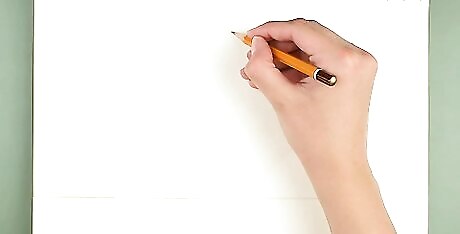
Place a vanishing point above or below the horizon line. Make a horizon line with two vanishing points on it as though you're doing two-point perspective. Then, decide if you want to put the third vanishing point below the horizon or above it. If you want to sketch looking down on your subject, make the line under the horizon or position it above the horizon if you want the viewer to look up.Tip: You may need to adjust your horizon line if you want to show an extreme three-point perspective. For example, if you're drawing a skyscraper, bring the horizon lower so you have more room for the subject. Remember that the horizon line represents your viewer's eye level.
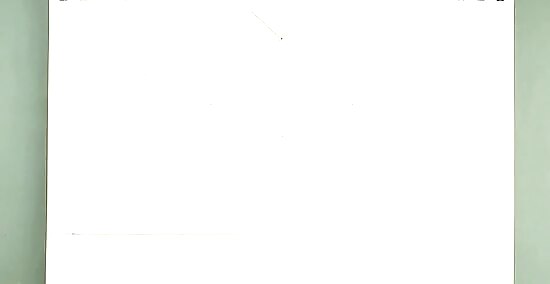
Draw lines that extend from the extra vanishing point. Set your ruler on the third vanishing point and draw 3 or 4 lines that move up towards the horizon or down across the horizon. You'll use this grid with the perspective lines from the other vanishing points.

Create geometric shapes with extreme depth. To make a building or cube, locate the perspective lines from the vanishing points that are on your horizon. Make a square along these lines to make the base. Then, sketch along the lines from the third vanishing point to create the sides and close the bottom of the shape using the lines from the horizon line's vanishing point. Note that the vertical sides of your building or cube won't be parallel in three-point perspective. Instead, they should slant up or down towards at an angle.
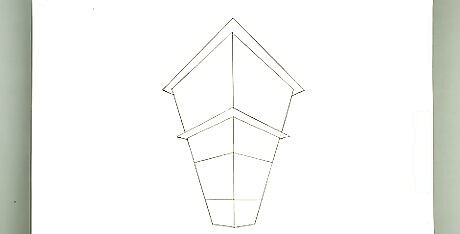
Now you're ready to draw perspective! See related wikiHows for more help refining your drawing skills.















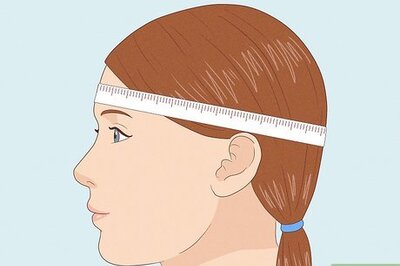



Comments
0 comment